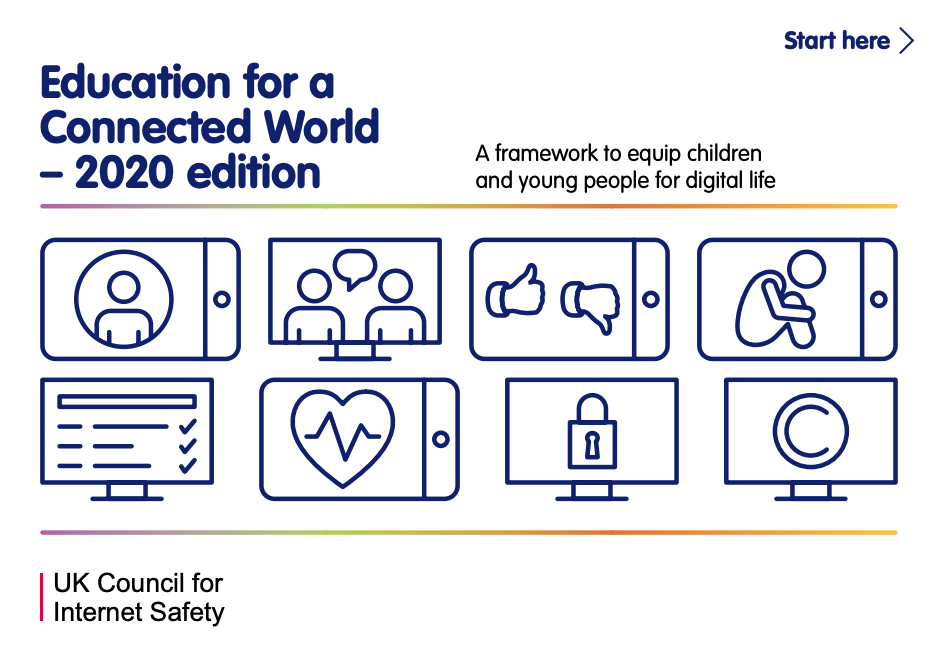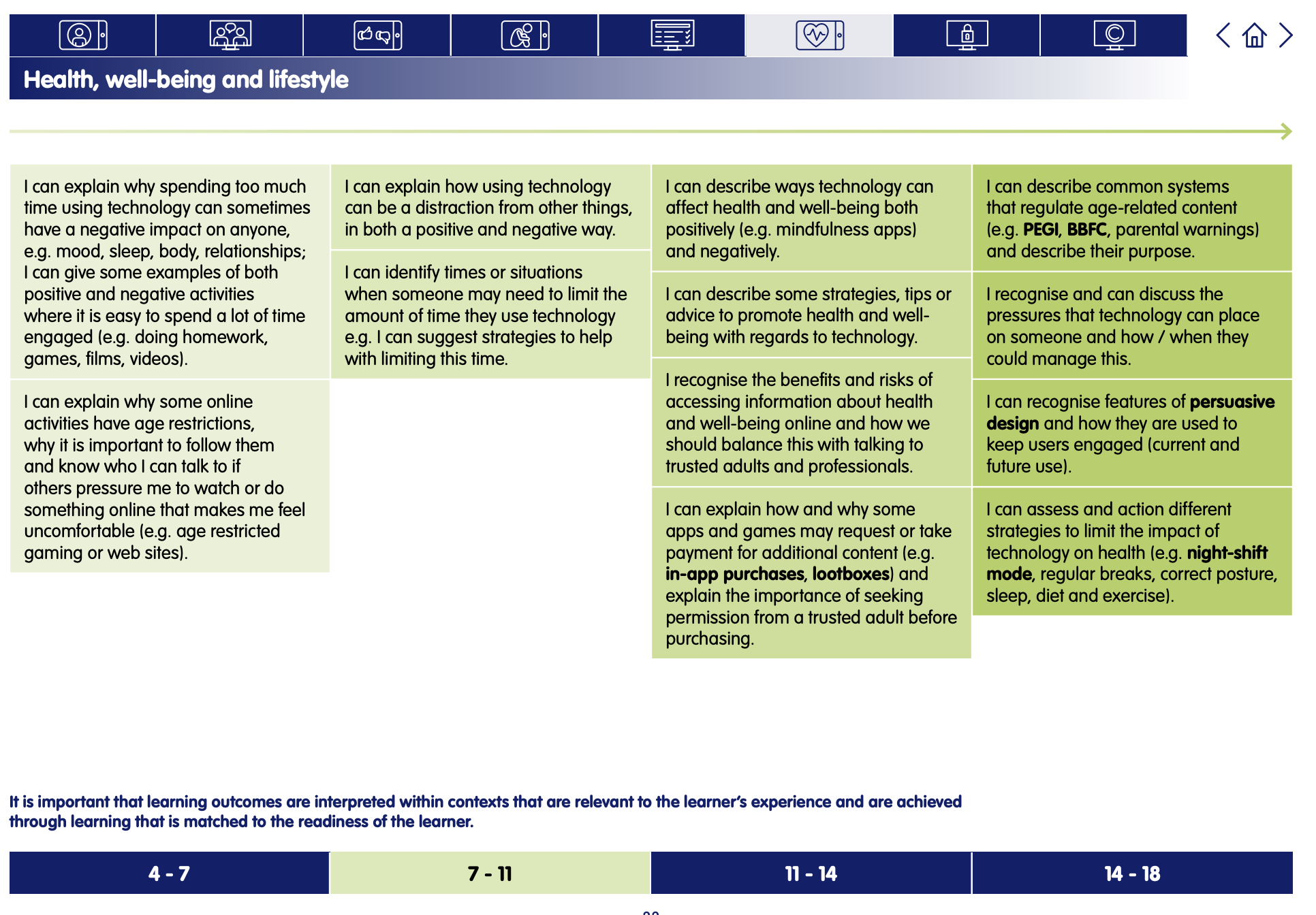Device-Free Moments
Digital Literacy and Online Safety (Y3) - Lesson 1
A note about this lesson

This lesson is taken from Common Sense Education’s excellent Digital Citizenship curriculum. Their resources are shared for free under A Creative Commons Attribution- NonCommercial- NoDerivatives 4.0 International License.
You can find the original resources HERE.
Objectives
- Recognise the ways in which digital devices can be distracting.
- Identify how they feel when others are distracted by their devices.
- Identify ideal device-free moments for themselves and others.
Lesson 1 - Device-Free Moments
Lesson 2 - That's Private
Lesson 3 - Digital Trails
Lesson 4 - Who's In Your Online Community?
Lesson 5 - Putting a STOP to Online Meanness
Lesson 6 - Let's Give Credit
Links to Education for a Connected World.
This lesson from Common Sense Media's Digital Citizenship curriculum links to the following strands from the Health, well-being, and lifestyle section of the Education for a Connected World framework.
Introduction - Device-Free Moments
Technology use isn't always a distraction, but there are definitely times when it's best to keep devices away. Help students learn when it's appropriate to use technology and when it's not -- and practice making family rules for device-free time at home.
Ask: Do you know why it's not OK for people to drive and text on their phone at the same time? (Slide 3).
Invite students to respond. Examples might include: It's unsafe, you can't pay attention to traffic, it's illegal, you don't want to hurt somebody accidentally.
Say: Today we're going to talk about why it is important to have some device-free moments in our lives. Let's start by watching a funny movie about this topic.
Show the Sesame Street Device-Free Dinner Video on Slide 4. As an alternative to Sesame Street, you can show the PBS Kids "Arthur - No Internet?!" Video.
Say: I'd like you to turn to your partner and talk about what you noticed in that video. Are there moments where it would be better not to use devices? (Slide 5)
Call on a few students to share what they or their partner said. Student answers will vary, but typical responses might include: When you're out at the movies, at church, mosque, or temple, during family dinners, right before bed, etc.
Explain to students that the responses they shared are examples of when technology can be a distraction. Define distraction as something that keeps you from giving your full attention. (Slide 6) Define attention as noticing someone or something as important. (Slide 7)
Explore - Device-Free, When and Where?
Say: Although every situation and every family is different, there are times in all of our lives when it's a good idea to have device-free moments. You also have to think of how being on a device affects those around you, because it can also affect our friends and family. Let's talk about a few key points to consider so that we can have more device-free moments in our lives.
Project the corresponding slide and talk through each of the four key areas to consider in selecting ideal device-free moments. Emphasise that technology use is not always a distraction, but that there are certain times when it's best to keep devices away.
- Safety: There are times when your, or someone else's safety could be at risk. (Slide 8)
- An example is when somebody is crossing the street. If they're on their phone when they're crossing the street, they might not be able to see a car coming.
- Respect for people: There are times when it hurts other people's feelings if you are distracted and not paying attention to them. (Slide 9)
- An example of this is when someone is talking to you directly. If your friend is trying to tell you an important story, put down your game and listen. It's important to pause for people!
- Concentration: There are times when you should give your full attention to a specific activity. (Slide 10)
- An example is when you are reading a book, doing homework, or even doing a craft. These activities require you to give a task your full attention, and sometimes having devices out makes it harder to concentrate on what you're doing.
- Sleep: There are quiet times, like when we are going to sleep, when devices should be put away. (Slide 11)
- Doctors recommend that people stop using devices at least an hour before bedtime because the blue light in the screen can affect how well we sleep.
- A good idea is to charge devices away from where you sleep so that you're not tempted to use it right before bed. It's important to get your rest so you can have a great next day.
Create - Family Device-Free Rules
Say: Today you're going to get to be in charge. You're going to create a list of family rules to have device-free moments! This list of rules is not just for you, but also for your parents, siblings, and whoever else you live with. You'll be able to take them home to share with your family.
Distribute the Family Device-Free Rules Student Handout. Read aloud the directions and examples on Slide 12. If you feel students need more guidance, you can come up with example rules for each category as a class and have students pick the rules most relevant to their family.
Remember: This is a time for students to reflect on their own lives. Everyone's family is different and so students' Family Device-Free Rules may vary.
Invite students to share their rules. Be sure to cover each of the main focus areas: Safety, Respect, Concentration, Sleep.
Plenary - Pause & Think Moment
Say: Today we talked about how devices can be distracting, and how to make device-free moments. In your reflection, I'd like you to think, draw, and write one piece of advice you would give a grown-up (your mom, dad, babysitter, uncle, etc.) about how to avoid digital distraction. Don't be afraid to be the boss and lay down the rules.
Distribute the Pause & Think Moment Student Handout. Read the directions aloud and allow students to complete the reflection independently. (Slide 13)
Invite students to share their reflections with the class. Collect handouts to assess student learning.
Send home the Family Activity and Family Tips.


